This post contains affiliate links for which I may make a small commission to help keep the site running. You will not be charged extra for these items had you not clicked the links. Thank you for your help to keep the site running!
Climb your way up 52 spiraling stairs to the attic in a building near London Bridge, and soon you’ll discover a hidden gem of a London attraction that you might have never heard about, but will be so glad you did.
It’s one of the most unusual things to do in London, and I’m taking you with me every step of the way.
In this review of the Old Operating Theatre Museum, we’ll duck our heads, climb that staircase, and take you into the wonderful world of historic medicine, including amputations, leeches, and more (seriously, hold onto your hats, it’s about to get queasy).
GET A FREE LONDON INTRO GUIDE and ACCESS TO MY FB GROUP
Start your planning with this “Intro to London” guide and access to my London planning Facebook group!

The Absolute Must-Knows (from a Londoner)
- 😍Cheapest Way to See it All: Get the London Pass here (yes, it’s worth it)
- 🎭Cheapest site for West End theatre tickets: London Theatre Direct
- 🚕Cheapest and most reliable airport transfer service: Welcome Pickups
- 🚉Cheapest Way to Book Train and Bus Tickets: Omio
- 🔌Most Reliable Adapter for UK Plugs: This one
Hey! Want more honest UK tips and planning advice? Click here to join my London and UK Travel Tips Facebook group, where I can answer more of your questions!
Check out the YouTube channel for more London tips
Where is the Old Operating Theatre Museum?
Practically, the Old Operating Theatre Museum is at 9a St Thomas Street, London, SE1 9RY.
If you’re coming by tube, that means go to London Bridge station and take the short walk from there.
London Bridge station has many exits, so check on the map before deciding which one or ask a member of staff to help point you in the right direction.
It’s one of the best things to do near London Bridge, as a matter of fact!
Historically, the Old Operating Theatre Museum is in the attic of St. Thomas’ Church.
You’ll learn more about why when you visit the museum, but the entrance to the museum and operating theatre is through a tiny spiral staircase – the bell tower!
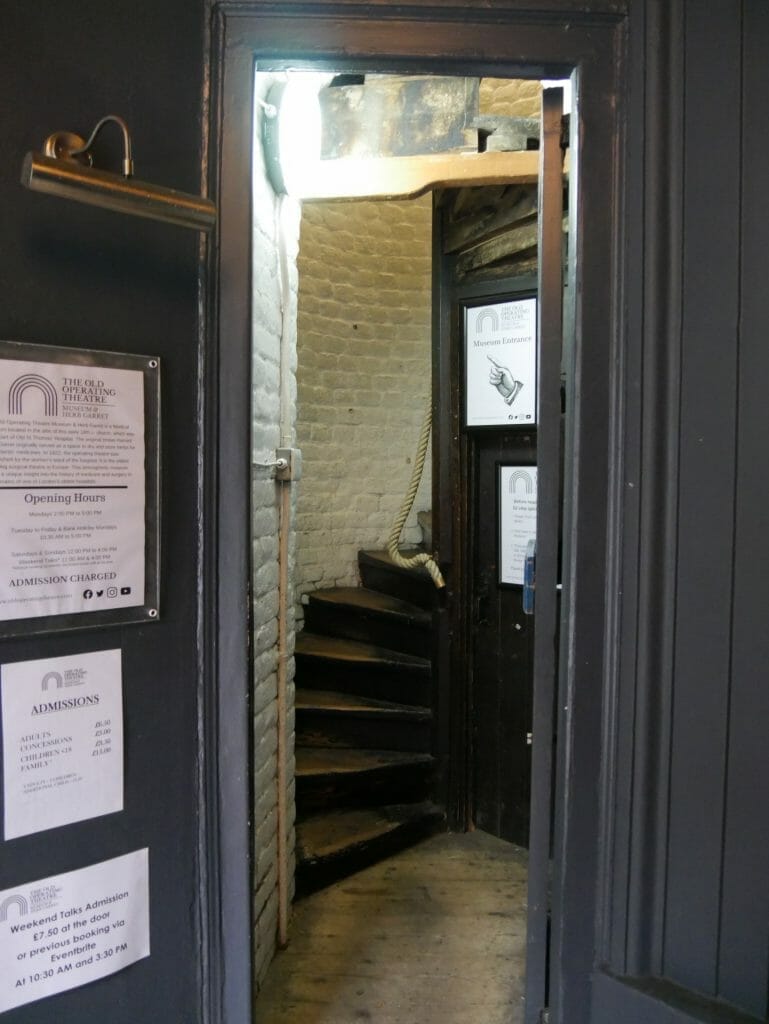
And when I say steep and narrow, I mean steep and narrow.
You would really regret trying to haul luggage up here, and unfortunately for those with mobility issues, the museum is inaccessible.
There is a rope to keep your balance on as you go up, so even if you do need to take a bit more time, you can steady yourself and take breaks as you go along.
It will be obvious when you emerge into the museum entrance, so until then, just keep climbing!
IMPORTANT: are you coming to the UK from abroad?
In case you’re reading this from outside the UK and will be a foreign visitor here, you need to know these 2 things to stay safe and save money.
- Travel insurance – you need it when going overseas! I use this site to get the best quotes and purchase my packages from. Do not skip this – having medical coverage abroad as well as other coverage in case of missed flights, lost luggage, etc is essential. As I said, I have never gone wrong using this site.
- International debit cards without fees – do not get stuck paying extortionate foreign fees when using your card abroad (and the UK is almost all card these days). I use the Wise debit and travel card which you can apply and learn more about here.
What’s in the Old Operating Theatre Museum?
Here’s where we get to the part of the review where you discover whether this is your ultimate museum day out, or one you and your hypochondriac self should skip all together.

The attic used to be used to store dry herbs and medicines for hospital patients, and today this portion of the room still has lots of lovely smelling dry herbs that you can run your hands through.
We loved wandering around all of the baskets and seeing if we could guess what was inside.

In the main part of the museum, when you first walk in, you’ll come across everything from old school blood letting equipment (leeches required, of course), some preserved treatments and body parts in jars, and even a book where you can write down all of your biggest medical fears.
This is both quirky and terrifying for someone who thinks that every headache is a brain tumor.

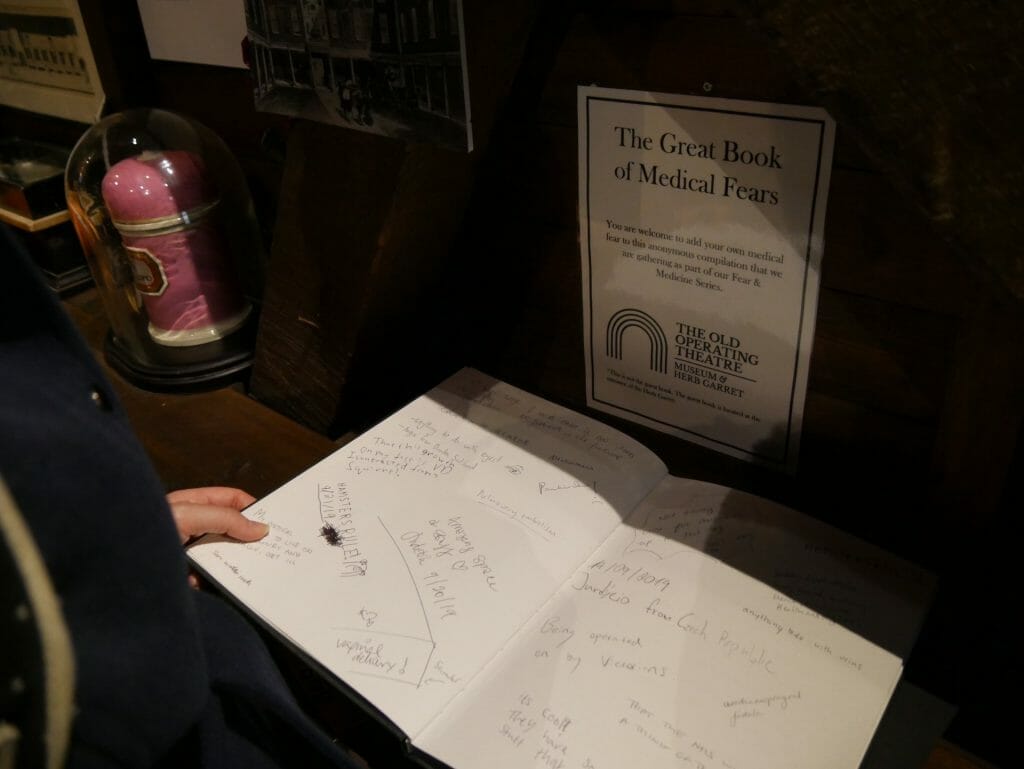

Each display has a plaque explaining what’s inside, and while there is nothing high tech about it, the wonderfully weird quirkiness of it all is just added to by the somewhat faded descriptions.
There is plenty of new to be found as well, though, with dedicated print-outs for kids to help them explore the area, and information posted about the various events that take place about the Old Operating Theatre Museum, including Victoria operation tutorials and information about poisons and murders!

Head further into the museum and you can turn right to come to a dead end and thoroughly check out the section involving children at St. Thomas’ Hospital.
Here, you can see bassinets that would have been used for patients, medical equipment used on babies, and an entire display about childbirth in the past, including some pretty gnarly looking forceps used to help get the baby out.
Let’s just say that that it made me grateful for the 21st century.

Take a turn to the left, and you’ll go down a tiny corridor that leads to the old operating theatre itself.
Before you get there, though, take time to look at the displays about amputations and anesthetics.

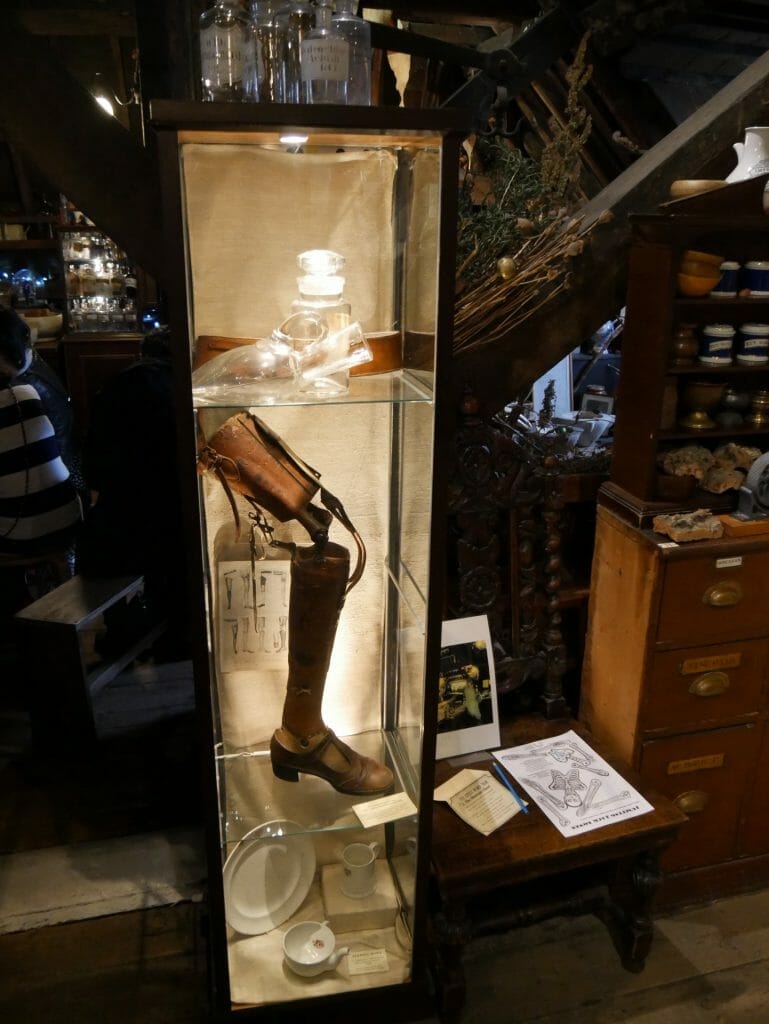
Not only will you get to marvel at the amputation equipment used in the past (a sentence I never thought I’d write), but you also will learn about the history of delivering anesthetic and the fact that anesthetic wasn’t even invented for much of this operating theatre’s history!
That’s right – you can actually see the teeth marks on the sticks they used to have to put in the patient’s mouth to bite down on!

There is a ton of information on survival rates, as well, which brings a somber tone to the museum.
The doctors did what they could with the tools at the time, but going into surgery back then was certainly nothing like it is today.
You can also see some of the masks and methods used to deliver medications to patients, which look as if they were very inefficient, but did the trick well enough for back in the day.

Finally, at the end of the corridor is the entrance to the namesake of the museum – the operating theatre that was used to teach students medical procedures and operate on female patients to St. Thomas’ Hospital.
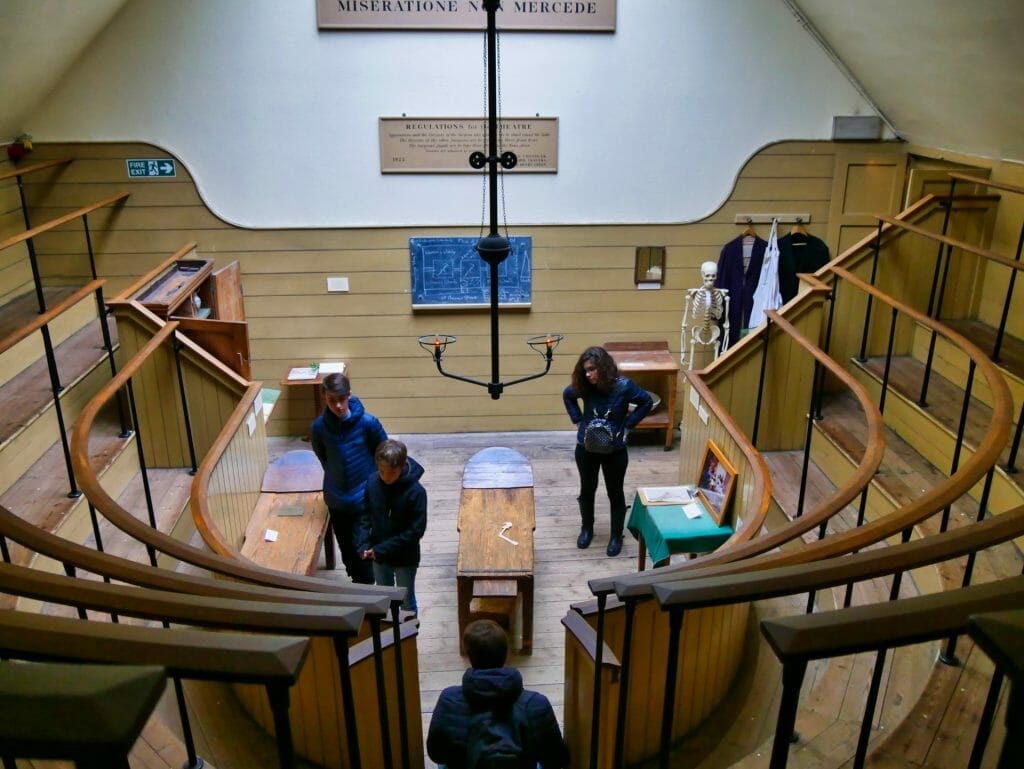
The structure of the theatre is the same as it was when it was used, though it had to be recreated with things put into place where they would have been, as it wasn’t fully set up as an operating theatre when it was “rediscovered” in the late 1900s (though it was always known about and mentioned in literature).
There’s an interesting booklet in the operating theatre that details the operations and recovery periods of various patients through the years, and there is an authentic operating table in the center of the room – not the coziest thing you’ve ever seen!
Don’t be like me and forget travel insurance when you really need it! Make sure to purchase travel insurance before you go abroad – I recommend World Nomads for great coverage and good prices.
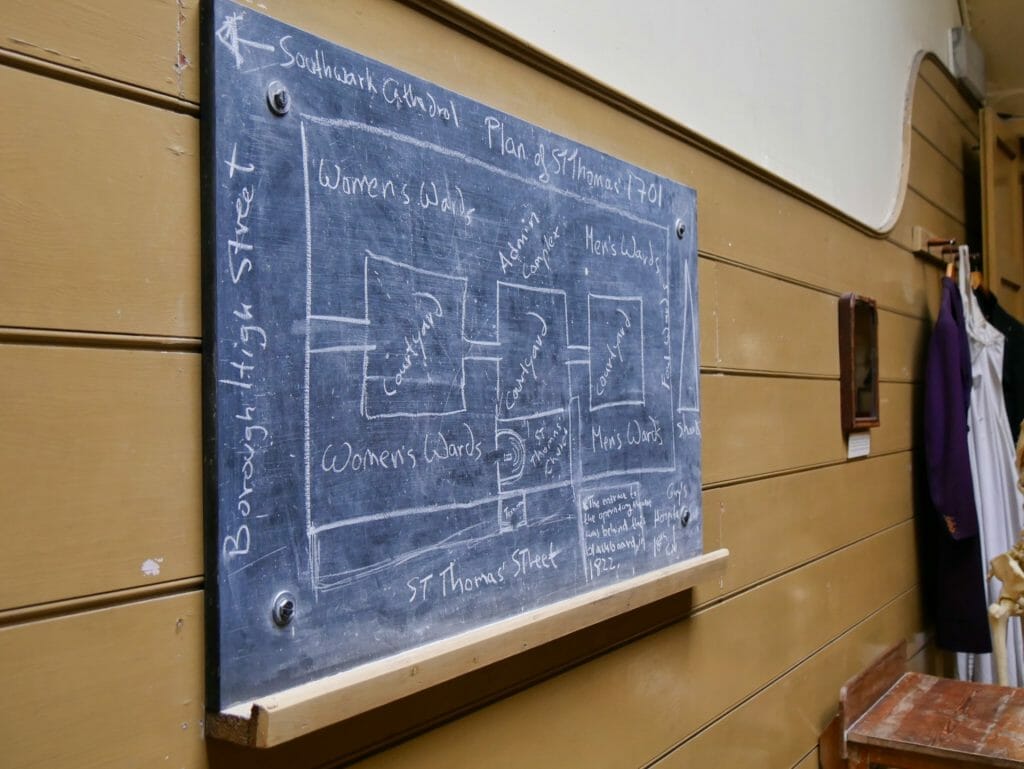

Entry Cost for the Old Operating Theatre Museum
The Old Operating Theatre Museum only costs £7.50 per adult and £4.50 per child, which is an absolute bargain for a London museum and well worth it for the interesting nature of this museum.
While, yes, other museums like the British Museum and Science Museum are completely free, this is truly a niche museum and a charity that relies on admission prices to be able to keep the space preserved and put on all of the talks and events that make it so unique.

If you’re coming to London, you’ll also appreciate some of our other London guides, including…
x The Ultimate London Packing List for All Seasons
x London’s Most Iconic Attractions to Add to Your Bucketlist
x A Dummy’s Guide to Getting Around London
Events and Talks at the Old Operating Theatre Museum
We were surprised just how many events and talks are put on by the Old Operating Theatre Museum in London, and in fact it adds to the positivity of this review of the Old Operating Theatre Museum.
When we were there, there were a group of kids with their parents who were learning about herbs and getting the chance to make a craft that included some of the dried herbs from the museum.
There are also frequent talks on Victorian medicine, as well as surgery demonstrations, film nights, and the chance to book out the space to use for your own (low-key) event – no raucous parties will be held in here!
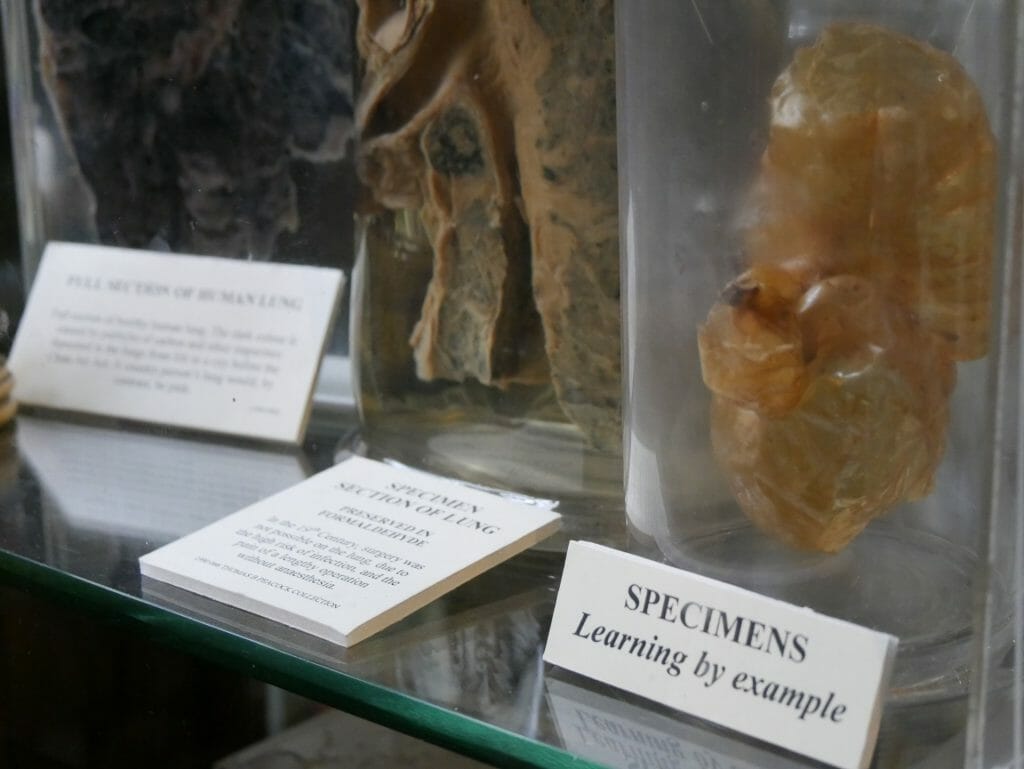
The Old Operating Theatre Museum for Kids
What the Operating Theatre Museum lacks on interactive displays, it makes up for in the quirkiness of its displays.
It’s not a museum that you can just let your kids loose in a kid’s play area or anything like that, but it’s small enough that you can keep an eye on them and they do have kid-specific trails through the museum to keep them occupied.
I’d definitely put it on the list of things to do in London with kids.
The museum will be most appreciated by kids middle school age and up, but open to all.
And, of course, remember that they need to climb the stairs up, so if you’ve got ones with little legs, prep them in advance!
There are also some cute items in the gift shop that would go well with a kid’s visit to the museum.
Some fluffy viruses, anyone?
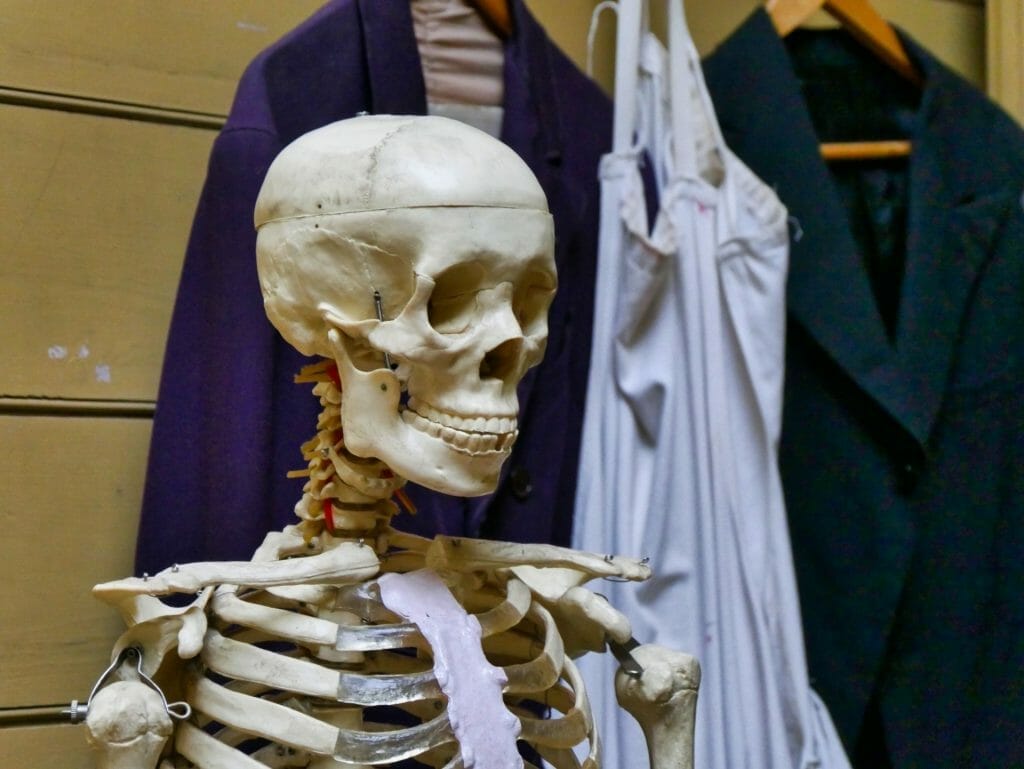
What to Do Near the Old Operating Theatre Museum
Before or after your visit to the Old Operating Theatre Museum, you should explore the surrounding area as there’s a lot of London to see there.
Check out the full guide to London Bridge for more information, but some notable things that are walking distance from the museum are: a visit up to the Shard, a stop in the Clink Prison Museum, a stroll along the River Thames, and a peaceful moment in Southwark Cathedral.
And, of course, don’t forget one of London’s most well-loved food markets in the area, Borough Market.
Get a bite to eat here before or after your visit to the museum (I would recommend before as afterwards you may not want to eat after seeing all of the human internal organs in jars!)

What else should I not miss in London?
If you’re visiting London soon, here’s a very brief rundown of a few of my other favorites to make sure you don’t miss anything!
- Hidden London Walking Tour – this tour is the absolute best if you want to see London in a different light and uncover hidden nooks, crannies, and histories that you won’t get on your normal, run-of-the-mill London walking tour. Click here to check prices and book.
- Historical Westminster Walking Tour with Churchill War Rooms – if you’re a history buff or even mildly interested in all of the insane things that have happened in London, particular during the wars, you have to book this tour which is an absolute bargain for the tour + entry to the Churchill War Rooms (basically two must-dos in one). Click here to check prices and book.
- Cutest London Afternoon Tea on a Bus – want to see the sights and enjoy afternoon tea at the same time on the upper deck? Yes, absolutely you do. This afternoon tea is a real delight and helps you get out and about while also putting your pinkies up. Click here to check prices and book.
UK Travel Planning Guide: the FAQs
🏥 Should I buy UK travel insurance?
Absolutely yes. Basic coverage is not expensive, and as a visitor you are NOT covered under the NHS. Compare policies and prices with Travel Insurance Master here, a big name in the travel insurance business, and cross that off your list.
🔌 Do I need travel adapters for the UK?
Yes, you do, otherwise you won’t be able to plug in your electronics/phone/lifelines. I recommend this one, which is all-in-one so you can use it in other countries.
🚗 What do I need to drive in the UK?
The first thing you need to check out if you’re planning on renting a car in the UK is this guide to driving in the UK for visitors – the roads, signs, and driving experience will likely not be what you’re used to and it’s essential to prepare yourself to stay safe and aware.
🛌 What’s the best way to book hotels in the UK?
For UK hotels, Booking is the best site as it offers free cancellation on many properties. If you want an apartment, I always recommend VRBO over AirBnb.
📳 Will my phone work in the UK?
Yes – if you set it up right. Check out my guide on making your foreign phone work in the UK to ensure that you get the type of service you need.
🚿 Can I drink the water in the UK?
Yes, UK water is great and perfectly safe. But drink out of taps in any kitchen or use water fountains. Double check before drinking out of the taps in hotel bathrooms, though, as they may be on a different system. London water is safe to drink.


